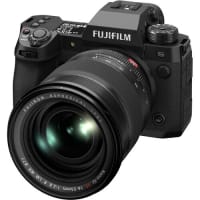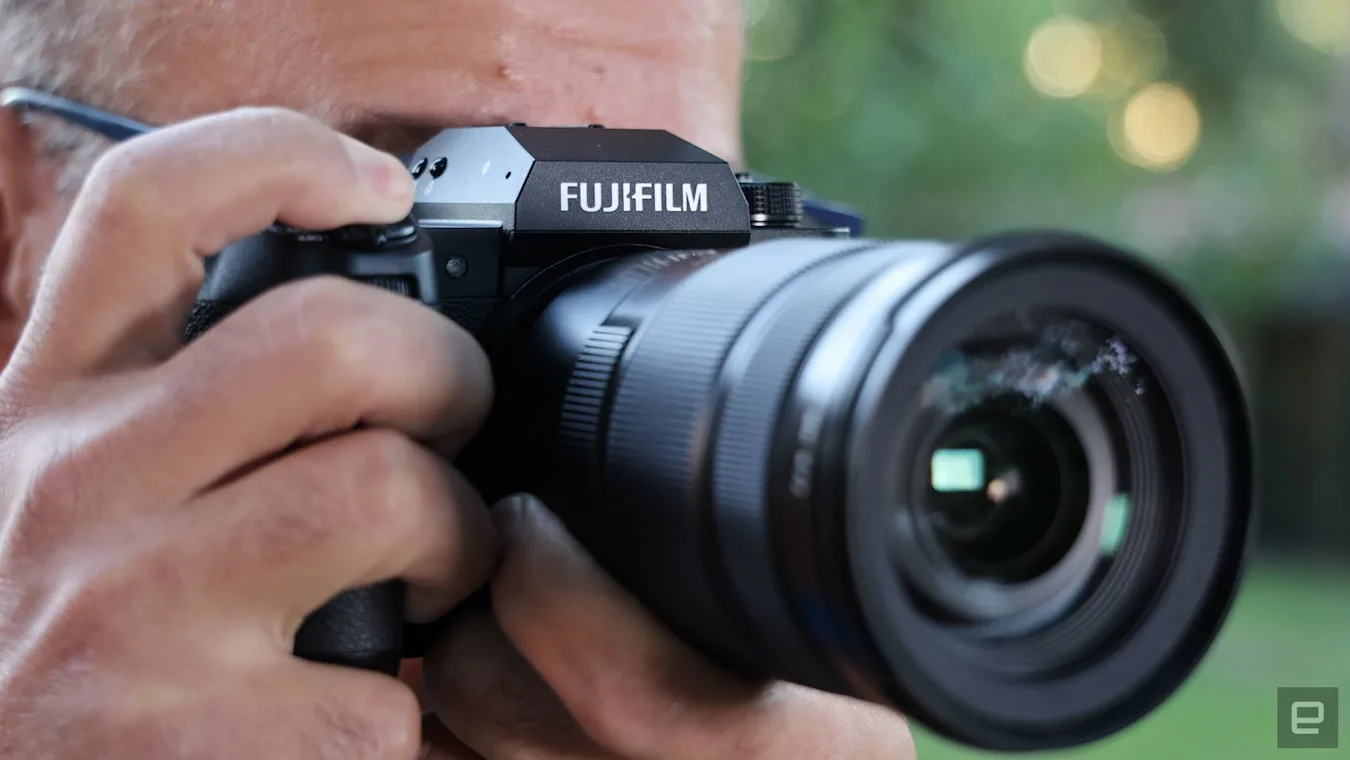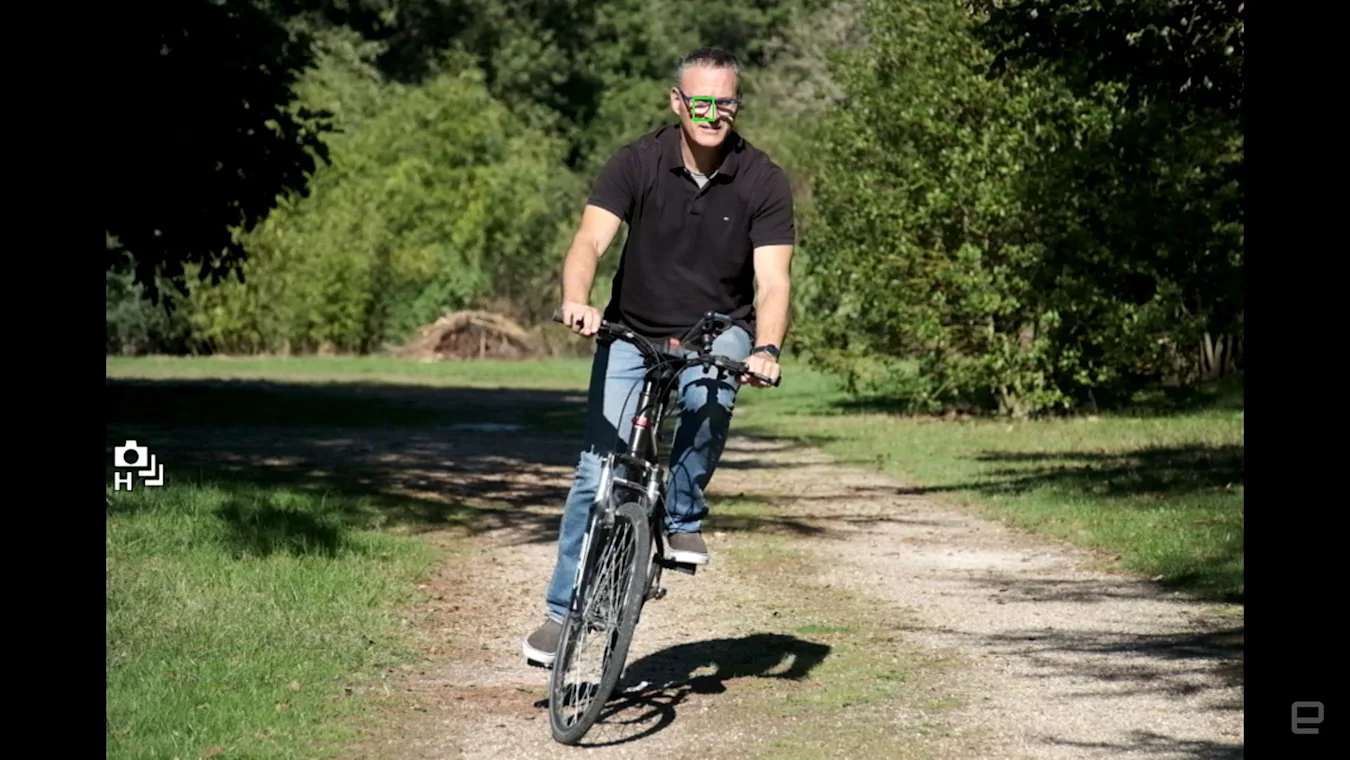Fujifilm X-H2S review: The most powerful APS-C camera yet
Intro
Four years after releasing the X-H1, Fujifilm has finally followed it up with not just one but two models. One of those is the highest-resolution APS-C camera to date, the 40-megapixel X-H2. The other is what we’re looking at today, the high-speed X-H2S designed for sports, wildlife shooting and more.
The biggest feature of the X-H2S is a new stacked, backside-illuminated 26.2-megapixel sensor. Its high speed allows burst shooting at up to 40 fps, faster autofocus and reduced rolling shutter. It also promises improved image quality, and comes with in-body stabilization, a high-resolution viewfinder, dual card slots and more.

Pros
- Very fast burst speeds
- Class-leading EVF
- Excellent video capabilities
- Great image quality
Cons
- Stabilization not great for video
- AF still behind Canon and Sony
- Expensive for its class
- Lacks Fujifilm’s retro charm
These improvements and features don’t come cheap, though. At $2,500, the X-H2S is now one of the most expensive APS-C cameras out there, with the same price as comparable full-frame models like Canon’s EOS R6 and the Sony A7 IV. Is it worth paying that for a smaller sensor?
Body and handling
The X-H2S isn’t your typical Fujifilm camera. At 660 grams larger and heavier than the X-T4, though it is a touch lighter than the X-H1. It has a much bigger grip as well that imparts a feeling of stability, ideal if you’re attaching big lenses for sports or wildlife shooting.
As mentioned, the layout is more like rival mirrorless cameras from Canon and Sony than other Fuji models. Instead of dials that display shutter speed, exposure compensation and ISO like the X-T4, it has conventional front and rear dials. The only one on top is a mode selector, and at the back you have a joystick and D-Pad control. It’s got no less than 12 buttons, most of which can be reprogrammed for different functions. As with the X-H1, it has a top LCD that shows primary settings.
Since it’s designed for sports and wildlife shooting, which requires changing settings on the fly while keeping an eye on the subject, the layout makes sense. However, I know many Fujifilm fans prefer the traditional dials – though at least you can see settings on the top LCD display if shooting from the hip. The only control I didn’t care for was the record button, as it’s tiny and awkwardly positioned. The X-H2S uses the same logical menu system as the X-T4, so settings are relatively easy to find.
Gallery: Fujifilm X-H2S review | 21 Photos
Gallery: Fujifilm X-H2S review | 21 Photos
Also good for action photographers is the electronic viewfinder (EVF) that provides blackout-free burst shooting and higher resolution (5.76 million dots) than either the Sony A7 IV or Canon EOS R6 (3.68 million dots each). It also packs a high-resolution, fully-articulating touch display that lets you control focus, quick menu and other functions.
For I/O, you get a high-speed USB-C port with power delivery, plus WiFi and Bluetooth for camera controls or transfers. Unfortunately, Fujifilm’s camera app for live view shooting or image imports is relatively primitive (the low 1.7 Play Store rating is a clue), failing to show things like exposure and audio levels for video, or allow burst photo shooting.
Video users get both microphone and headphone ports, along with a nice full-sized HDMI jack for external recorders. To handle the extra speed and video capabilities, it has a pair of card slots, both UHS-II and high-speed CFexpress. And finally, the battery (the same kind as the X-T4 but upgraded) allows up to 720 shots on a charge and well over two hours of 4K 30p video recording.
Performance

Steve Dent/Engadget
With up to 40 fps burst shooting speeds at full resolution, the X-H2S is faster than any other APS-C camera, but there are some caveats to that. It will only hit those top speeds in release, rather than focus priority mode (meaning it takes the shot even if it’s not in focus). That means a lot of your photos will be blurry, so it’s not a realistic mode for action shooting. Dialing down to 30 fps, however, I got a lot more shots in focus and the hit rate was nearly perfect at 20 fps
Shooting with the mechanical shutter, I saw 15 fps burst speeds, very respectable and a match for Canon’s EOS R7. On top of that, the mechanical shutter is very quiet (and sweet-sounding), particularly compared to the clattery shutter on the EOS R7. In that mode or the 20 fps silent mode, I was able to capture upwards of 300 shots at a time to a fast CFexpress card – over 10 seconds of shooting. That’s right up there with sports-centric cameras like Canon’s EOS R3.
The X-H2S is Fujifilm’s first camera with bird and animal tracking, and can also follow cars, motorcycles, bikes, airplanes and trains. It worked pretty well for a first iteration, though it would lose tracking depending on the shooting angle and other factors.

Steve Dent/Engadget
Face and eye tracking, though, is the best I’ve seen on any Fujifilm camera. It tracks smoothly and tenaciously, giving you more shots in focus. It also did a good job of getting a subject’s eye and not their eyelashes or nose in focus. Overall, the autofocus on the X-H2S is much improved from before, but not quite up to Sony and Canon’s standards.
It does beat all its rivals when it comes to shooting discreetly, though. The stacked sensor’s rapid speed means it has minimal rolling shutter in silent mode, so you can confidently use it for shooting birds, wildlife, sports and other fast-moving subjects.
Promising seven stops with supported lenses, the in-body stabilization also performed well for photos, letting me get sharp shots at relatively low shutter speeds. However, it doesn’t work as well for video, as I’ll detail shortly.
Image quality
Gallery: Fujifilm X-H2S review sample images | 29 Photos
Gallery: Fujifilm X-H2S review sample images | 29 Photos
With a similar 26.2-megapixel sensor to the X-T4 (with the addition of the stacked technology), the X-H2S is among the best APS-C cameras for color rendition. Everything looks natural, whether you’re shooting landscapes, animals or people. JPEGs look good straight out of the camera, with a slightly better balance between noise and sharpening than before thanks to the tweaked color science.
Like the X-T4, it uses a dual-gain sensor, with the sweet spots at ISO 800 and 3200. High ISO performance is nearly on par with the X-T4, with noise reasonably well controlled and detailed preserved up to about ISO 6400. It does offer usable shots beyond that, but exposure needs to be correct or you’ll have excessive noise when boosting blacks.
The 14-bit RAW files offer plenty of room for adjustment, with some exceptions. Because of the dual-gain sensor, it’s better to shoot at higher ISOs than try to shoot at the base ISO 800 and then boost the blacks, as noise levels are higher. Still, you can boost blacks in high-contrast shots by several stops without any issues. It doesn’t perform quite as well as the X-T4 in this regard, likely due to the stacked technology which can raise the noise floor.

